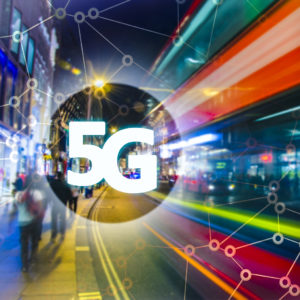The media narrative on emerging 5G technology claims China is the dominant player and the U.S. can’t catch up. Wired magazine just published a piece with the headline, “China Will Likely Corner the 5G Market — and the U.S. Has No Plan.” A Deloitte study released last summer found that China outspent the U.S. by $24 billion on 5G tech since 2015.
And in a recent BBC interview, Ren Zhengfei, founder of the China-based 5G tech innovator Huawei, pushed back against efforts by the Trump administration to isolate them by declaring “the world cannot leave us because we are more advanced.”
“There’s no way the US can crush us,” Ren said.
But a new report flips that narrative on its head.
The report from Cisco, which provides telecommunications equipment and networking hardware to telcos and internet service providers (ISPs), says the hyped-up benefits of 5G won’t emerge until 2022, but when they do, the U.S. will lead.
“By 2022, North America will be the region with highest share of connections on 5G at 9 percent,” Cisco states in the report. “The top three 5G countries in terms of percent of devices and connections share on 5G will be Japan (12 percent), Sweden (11 percent) and United States (10 percent), by 2022.”
Nowhere in the report does Cisco list China as a leader in the 5G race. Susan Crawford, a professor at Harvard Law, wrote in Wired that the biggest risk to falling behind will be the installation of fiber optic cables, which are necessary to provide 5G’s higher-speed connection, lower latency rates and faster download/upload speeds.
As Crawford points out, the U.S.’ track record for fiber installation is notoriously bad. Even with the help of federal grants to install fiber throughout urban and rural communities, installation is nowhere it needs to be to support 5G in many parts of the country, which is why telcos like AT&T and Verizon are racing to install as much fiber as possible as quickly as they can.
Rural areas in particular suffer because many currently rely on outdated coax cables which cannot handle today’s download/upload speeds for streaming services like Hulu or Netflix. Until recently, cable companies monopolized the internet markets (especially in rural areas), a situation the Trump administration’s Federal Communications Commission (FCC) seeks to change by encouraging telcos into the market.
China, meanwhile, could zoom past the U.S. with regard to fiber installation. A study from Rethink Research expects China’s fiber network to have almost 200 million lines by 2023, and the U.S. less than 40 million.
The FCC’s recent order to accelerate small cell deployment — another type of infrastructure necessary for 5G — could help the U.S. catch up. Verizon just announced it will deploy 5G to 30 cities by the end of the year, following the same promise from T-Mobile.
But a Deloitte study notes that small cells will only help so much.
“Without more deep fiber, carriers will be unable to support the projected 4x increase in mobile data traffic between 2016 and 2021,” the study reads. “The lack of funding and motivation to deploy fiber creates an uncertain future for wireless and wireline connectivity.”
Based on the data, the U.S. 5G network may cluster in more urban areas and have more connections as the Cisco report states, while the Chinese 5G network may be more evenly distributed due to its aggressive fiber installation tactics.
To stay ahead in the 5G race, then, the Deloitte study contends policymakers as well as industry leaders should work together to encourage fiber investment.
“Carriers are already making 5G investment decisions; ambiguous or delayed legislation may lead carriers to commit to investments that are inconsistent with the goals of increased network densification, greater broadband competition, and closing the digital divide,” the study reads. “Without rapid and decisive action, the costs to recover may soon become insurmountable.”

